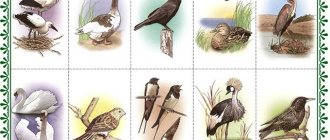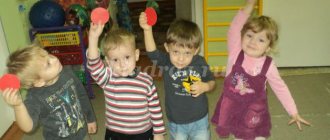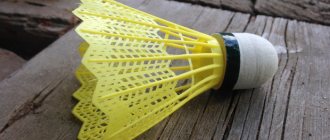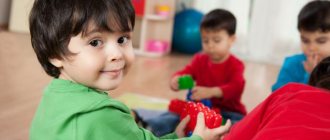Entertainment in the first junior group on the topic “Cars”
Category: Iudova A.S. Published: 12/10: 19073
Goal : to activate and consolidate children’s knowledge on the topic.
Equipment : Cardboard traffic light, zebra crossing, cars, green and red cardboard circle, steering wheels, large car, cars, materials for applique, rattles, audio recording.
Progress : The children have the “steering wheels” in their hands, and they “drive into the hall to the music. There is a traffic light in the center of the hall. The music turns off.
Host : Guys, look who came to visit us?
Children : Traffic light.
Presenter : That's right, traffic light.
For a long time, roads have had a master – the traffic light. The red light came on: stop, there is no way forward. The yellow eye repeats without words: be ready for the transition! When the light is green: go ahead. The path is clear! Transition!
The traffic light wants to play its game with you. And it's called "Traffic Light". If the green light comes on (the presenter shows a green circle), you and I are “going”, and if the light is red (the presenter shows a red circle), then we stand.
Game "Traffic Light".
Presenter : You guys are great! Know the colors of the traffic lights and do not break the rules! Guys, tell me, if we have the “steering wheel” in our hands and we are driving a car, then who are we?
Children : Drivers (Chauffeurs).
Presenter : Let's play the game “We are drivers.”
Game “We are drivers”.
We're going, we're going by car (driving). Press the pedal (move your foot). We turn the gas on and off (“turn the lever towards you, away from you”). We look intently into the distance (palm to forehead). The wipers clean off the drops (make circular movements with their hands) Right - left - clean! The wind ruffles your hair (ruffle your hair with your fingers). We are drivers anywhere (show right thumb)!
Presenter : That's what good drivers we are! Now, listen to the riddle from our traffic light:
“Four Wheels, Rubber Tire, Motor and Brakes... What is it?”
Children : Car!
Presenter : Correct! Car. Look what a big, beautiful car I have. Let's see what my car has?
Children : Rudder. Wheels. Windows.
Presenter (shows a car on a landscape sheet without wheels or windows): Look, our cars can’t drive because they’re broken. What do cars not have? (Children's answers). Shall we fix our cars? (Children's answers).
Application "Cars".
The music started playing.
Presenter : Oh! What is this? It seems that our friend “Traffic Light” is calling us to dance. Children get up from their chairs and run to the mat to dance. There are a lot of cars on the rug. There is a zebra crossing to the side.
Host : Look how many cars are driving along the road, we can’t cross it. What do we do?
Children's answers.
The presenter leads the children to the fact that there is a pedestrian crossing on the road and they can cross the road along it.
Presenter : So you and I came to our friend Traffic Light.
Dance with rattles: “We go, we go, we go.”
Presenter : That's how great we are! Let's say goodbye to our Traffic Light! And we'll go back to our group.
The children say : “Bye” and wave their hand. Music sounds, the children “leave”.
Photos can be viewed in our photo album!
Teachers: Iudova A.S., Chistyakova I.A., Smirnova O.N.. MADOU “Kindergarten” in the village of Pes
Complex lesson in a nursery group on the topic “Transport”
Shcherbakova Yulia
Complex lesson in a nursery group on the topic “Transport”
» Complex lesson in the nursery group “Transport” «
Types of children's activities:
Gaming, communicative, educational and research,
musical and artistic; reading fiction, productive.
Tasks:
teach to distinguish by appearance and name trucks, cars, buses, as well as their main parts: cabin, steering wheel, body, wheels, windows
develop speech, attention, general motor skills;
Planned results:
knows how to find objects following verbal instructions from an adult;
responds emotionally to outdoor games;
takes an active part in drawing;
demonstrates emotional responsiveness to age-appropriate literary and artistic works.
Materials and equipment:
toy cars, plane, ship, truck, car, motorcycle, helicopter, bus;
pictures depicting different types of transport
Whatman paper for collective drawing using non-traditional drawing techniques (stamps)
Organized educational activities:
Fixing transport names.
1. The teacher names a toy vehicle, and the children show it. (Car, plane, ship, truck, car, motorcycle, helicopter, bus)
2. Children look at the pictures and, at the teacher’s request, show transport.
Game “How noisy is transport?”
There is a lot of noise from transport. Let's remember and pronounce the sounds that we hear from transport:
• The car tires rustle on the road: “Sh-sh-sh-sh-sh.”
• The car is stuck in a ditch and is slipping: “Dzzz-dzzz”, Jzh-jzh”
• The pilot starts the plane’s engine: “Rrrrr-rrrr=rrrr.”
• The plane took off: “U-oo-oo-oo”
• They start the motorcycle, and it makes the noise “D-d-d-d-d-d” louder and faster.
• A train passes by: “Chuh-chukh=chukh.”
Introducing children to the poem “Truck” by A. Barto.
Listen to a poem about how a cat decided to go for a ride in a car.
No, we shouldn't have decided
Ride a cat in a car:
The cat is not used to riding -
The truck overturned.
Musical and rhythmic exercise “We are going, going, going”
Children listen to music and beat out the rhythm with rattles.
- Make some noise at the top. Tap the rattles on the floor. Tap the rattles on your knees. Hands with rattles to the sides. Hide the rattles behind the back.
Construction game “Car Garage”
When night comes, you and I go to bed in our beds at home. And real cars go to sleep in a special house for cars, called a “garage”. Now you and I will build a garage for our car. Take the cubes. Place them like this. And be sure to cover the top with a roof. Now our cars have their own garages.
Massage “These are the wheels”
For a car to move, it needs wheels. Look where the wheels are on your car? Spin the wheels by hand. Now let the car ride on your palm. Like this. I went along the handle, I went along the leg.
The wheels of the car are spinning and spinning,
They spin and spin, they drove through the whole city.
Collective drawing with stamps “Crossroads”
Look how big our sheet of paper is. Now we will all draw a real road with cars and a traffic light together.
(We draw the road with car treads, everything else (traffic lights, trees, cars) with foam sponges)
This is such a real crossroads we have!
Transport. Summary of GCD in 1st junior group
Abstract of GCD in the 1st junior group on the topic “Transport” Objectives: to learn to distinguish by appearance and name trucks and cars, buses, trolleybuses, as well as their main parts: cabin, steering wheel, body, wheels, windows. Materials and equipment: toy cars (car, truck, bus, trolleybus) toy steering wheel; illustrations. Musical accompaniment: “Jolly Train” (music by E. Komponeets). 1. Organizational moment. Children greet guests. And now we are going on a trip by bus. Guys, look at the tickets I bought for you. They are of different colors (red, yellow, green, blue). Progress of the lesson The teacher asks the children a riddle: Four wheels, Rubber tires, Motor and brakes... What is this? (car). 2. Main part. Looking at toys. The teacher shows the children illustrations of cars: a truck, a car, a bus, a trolleybus. What is this? (car). Yes, these are cars, but each is called differently. This car is a passenger car. This is a cargo truck, what is this? (points to a bus, the children call it a car). And this is a trolleybus. All cars have wheels, a steering wheel, and a seat for the driver and passenger. Check if all cars have a steering wheel, wheels, and seats. What should a car have so that the driver and passengers can get in and sit in it? (door). Do all cars have a door? (children's answers). A truck has a body, in which the driver transports various goods: sand for a kindergarten, vegetables and fruits for a store, furniture for homes. And who are the trolleybuses and buses carrying (passengers). Does the bus have many seats? (a lot of) . It can carry a lot of people, but not a lot in a passenger car. And few people can fit in it. Now close your eyes guys (illustration). Train! It's not a car...even though we drive it. ..this is a train. 3. Dramatization of the song “Jolly Train”. The teacher offers the children cars in the parking lot and they can go on a train journey. Children, accompanied by music and shown by the teacher, imitate the movements and whistles of a train, moving around the entire space of the group. 4. Game “What is missing” Children approach the table on which there are toy cars. The guys name the cars. At the request of the teacher, close your eyes. The teacher removes the truck under the table, the children open their eyes, the teacher asks which car is missing (the teacher encourages the children to answer in a complete sentence: “There is no truck”). Then the teacher returns the hidden toy to its place, and the game continues until all the cars are hidden in turn. 5. Summing up and reflection And now, guys, it’s time for us to return to kindergarten. There is a bear waiting for us, we will tell him where we were. What did we do? (children's answers) What are we going to take? The bus has left... Children are offered the role-playing game “Riding the Bus.” The teacher suggests building a bus from chairs and going to the zoo.



